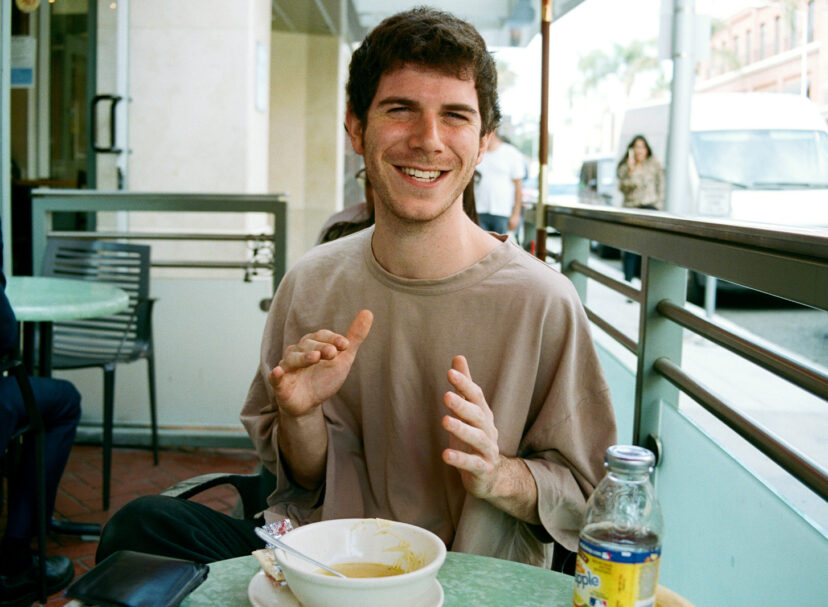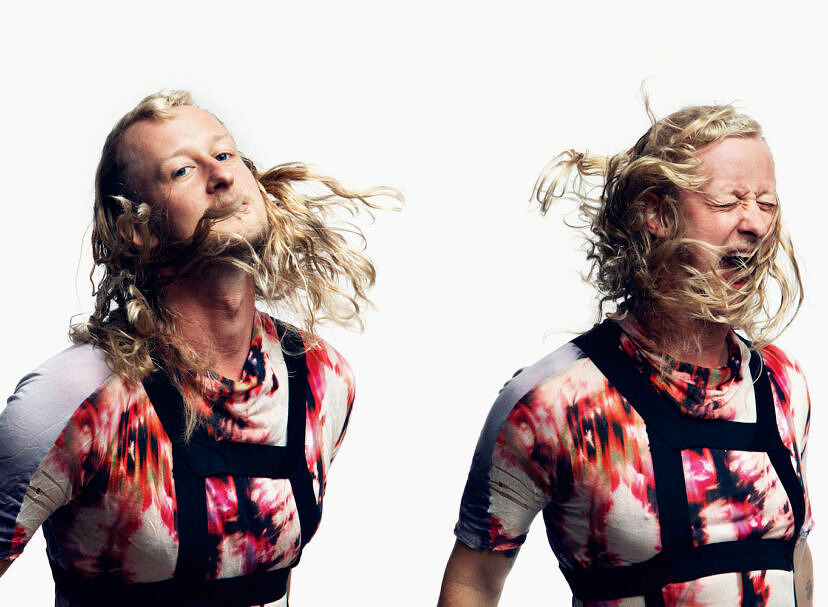Text: Alec Coiro
All Images Courtesy of Clebs
Clebs span styles all the way from techno to jazz, hitting all the best stuff in between, and putting a consistent sound over all of it that gives their work together a signature styles. Clebs consists of Emilie Weibel, the Swiss vocalist, and Jason Nazary who plays drums and produces. Drummers and vocalists represent the essence of beat and melody respectively, but in the case of Weibel and Nazary, they cleverly reverse the usual process whereby the vocalist lays down her track after the music has already been created. Instead, the singing becomes the core structure from which the rest of the music and sound of the tracks are created. It’s quite fascinating, especially given how eloquently and in-depth they tell us about their production techniques, how the songs are created, and the tools they use to coax them into existence.
How do you guys know each other?
(Clebs) “Hi! We met at a show we were both playing at, and it kind of clicked musically so we decided to work together. We both had similar ideas on what we wanted to go for.”
One of the many things I like about this EP is how curious it leaves you about the origins of the sounds you create. Some of the synth parts sound like they might actually be processed vocals and vice versa. Can you tell us a little about how you assemble the tracks in the studio and the gear that you use?
(Jason from Clebs) “Four of the tracks started as really basic demos with some synth loops and different drum sounds I had been messing with. We had a couple sessions where Emilie improvised some vocals on top. Then it was a matter of finding parts in the improvisations that stood out and organizing them into tunes. We were drawn to those moments that might have happened between our intention, say when we were laughing between takes, working out a melodic idea or even just the breath before a phrase. These casual moments often became the centerpiece of the composition. Especially say in the beginning of light playing, the track is built on blown up bits of emilie’s voice and little fragments of whispered mumblings. I used a vocoder plug in called virta quite a bit to double some of the main melodies. It has a real interesting glissando that happens when it’s tracking audio. Like on the bridge section of I’m Here it doubles the voice an octave up and adds these crazy wobbles between the phrases. I also used a Dave smith evolver synth as a way to give some of the bass sounds a bit more crunch and also filter the vocal melodies even more…it has pretty gnarly distortion and feedback.”
What’s it like studying jazz vocals? Who were some of vocalists you liked who led you down that path?
(Emilie from Clebs) “ I went on studying jazz because I was fascinated by improvisation and the multiple facets of the human voice. Early on I listened a lot to Jeanne Lee, Gretchen Parlato (who was also my teacher), my friend Sara Serpa, Theo Bleckmann or other vocalists such as Mike Patton or Meredith Monk. I liked to try to imitate other instruments as well, to transcribe and learn solos. It gave me other ideas about how I could use my voice. With Clebs, improvisation is a big part of our compositional process and I also started to explore the idea of transformation. How the character of my voice transforms either through performance exhaustion or with sound effects. I like this uncanny, beast like sound I can approach with the contact microphone that I tape on my throat and plug to my sampler effects. All the lows I can reach with it. Having the sound source be right at my throat, there is something a lot more internal and secret about it. I am more and more into creating minimal textures and noises, it is very therapeutic to me.”

We were drawn to those moments that might have happened between our intention, say when we were laughing between takes, working out a melodic idea or even just the breath before a phrase.

The drums on “Light Spectrum” stand out as sounding overtly live (were they live?). How much live drumming is there on the album.
(Jason from Clebs) “I recorded live drums for 3 of the 5 tracks on the record…light playing, light spectrum and homemade bread. when these tracks were coming together I wasn’t really focusing too much on how live drums would fit into it. Most all of my other work as a musician starts from the drums, so I wanted my approach to the music this time to be different. The orchestration and development of the compositions really centered around Emilie’s voice. I was most interested in how many different ways we could use it. As the main melodic material of course, but also pitched down and distorted for the bass sound or chopped up and looped for the rhythmic foundation (as in homemade bread). The drums we did add, we did at the end of the process after the tunes were already how we wanted them.”
The visuals for your “Homemade Bread” video have been described as glitchy. Is this an effect you go for in your music as well?
(Emilie from Clebs) “mmmm not necessarily, or not in the radical sense. But it’s true that we like to use little fragmented noises and casual sounds in our pieces, and to give them as much space as any other instrument. Some kind of sound democracy. In the video, Benton’s got this fascinating way of manipulating the image through analogue processing. The track “Homemade Bread” has a multitude of rhythmical and melodic combinations all coming from just a few audio fragments. In the same way, Benton filters our entities visually, unearthing a new shifting perspective. We captured shots of our hands playing a game of chance and following a specific choreography to mirror our compositional approach with the machines and how it shapes the urgent transformative character of our sound. It required a lot of practice. We’re currently working on some new hands choreography for our shows coming up. ”



